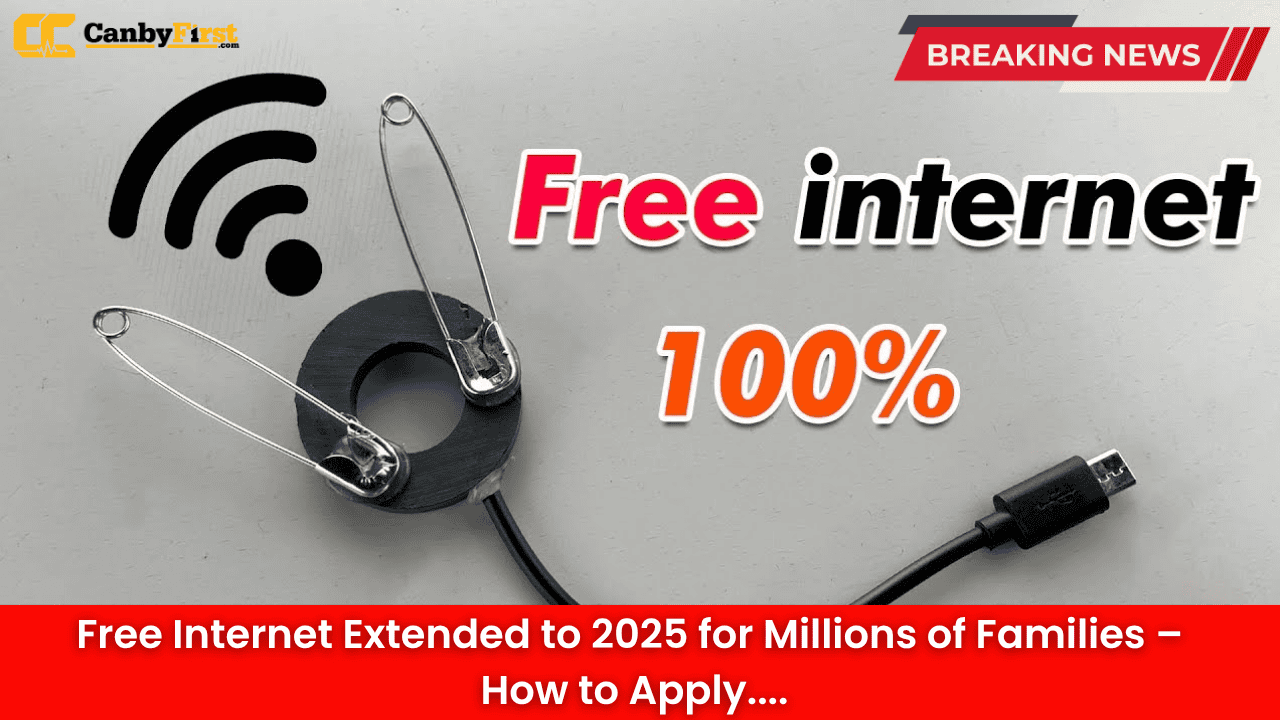Washington, US:
The federal initiative providing low-income households with free or heavily subsidized internet service has been officially extended through 2025, ensuring millions of families can stay connected without added economic strain. This extension of the Affordable Connectivity Program-style benefits comes as the demand for reliable online access remains vital for education, work, and everyday essentials.
A Win for Struggling Families
For many households, internet bills can stretch already limited budgets. With the 2023-2024 rollout proving to be a lifeline, the extension through 2025 aims to reduce the digital divide, allowing more Americans to participate in remote learning, access telehealth services, and manage essential tasks such as job applications and government services.
Also Read
Officials confirmed that over 20 million households have already enrolled, and with continued funding secured, the program hopes to expand even further. Families that qualify will not only see reduced internet costs but may also receive discounts on devices such as tablets and laptops.
Who Qualifies for Free Internet in 2025
Eligibility rules remain broad to include as many households as possible. To benefit from the program, applicants generally must fall into one of the following criteria:
-
Households with an annual income at or below 200% of the federal poverty line.
-
Participants in government assistance programs such as SNAP, Medicaid, or WIC.
-
Families with children receiving free or reduced-price school lunches.
-
Pell Grant recipients in the current award year.
-
Residents in Tribal lands who qualify for enhanced assistance.
These guidelines were designed to capture a wide net of struggling families, especially in areas where internet access is either costly or heavily limited.
Benefits Offered Under the Program
The extension will continue offering core benefits that make internet service more affordable:
-
A monthly discount of up to $30 on internet service.
-
Up to $75 monthly discount for those living on qualifying Tribal lands.
-
One-time discounts of up to $100 for eligible households to purchase a laptop, tablet, or desktop computer, provided they contribute between $10 to $50 toward the purchase.
These benefits are designed not only to cover urban households but also bridge gaps in rural areas where access has traditionally been a challenge.
How to Apply for Free Internet in 2025
Applying remains a straightforward process for households wanting to take advantage of the program. Applicants can:
-
Submit an Online Application: Households can apply through the designated official website application portal.
-
Apply by Mail: Print, complete, and mail a physical application form with proof of eligibility documents.
-
Apply Through Internet Providers: Many service providers are partnering with the federal program and can process applications directly upon request.
Applicants will need proof of income or participation in qualifying programs. Verifying eligibility ensures benefits go directly to those who need them most.
Why the Extension Matters
The COVID-19 pandemic underscored just how critical reliable internet connections have become. From schoolchildren relying on online education to employees working remotely, millions of families were left behind without affordable broadband. Extending this initiative through 2025 is seen as an investment in digital equity.
Education leaders have praised the move, citing that connectivity is now as essential as books and classrooms. Health professionals have also emphasized telehealth’s growing role, making affordable internet a matter of healthcare access as well.
Challenges Ahead
While the extension is being celebrated, it is not without its challenges. Critics argue that unless permanent funding mechanisms are introduced, families may face uncertainty beyond 2025. Additionally, some parts of rural America still lack physical broadband infrastructure, meaning discounts may not help if service is unavailable in the first place.
Lawmakers are pushing for long-term broadband affordability programs to ensure that when this extension ends, families are not forced offline again.
Looking Beyond 2025
Policymakers acknowledge that internet access is no longer optional, likening it to utilities such as electricity and clean water. Though extended for now, debates continue on whether subsidies should become a permanent cornerstone of federal policy.
Until then, the extension through 2025 provides millions of households a stable foundation to continue working, learning, and engaging online without worrying about mounting bills.
FAQs
1. Who is eligible for the free internet extension in 2025?
Households with low income or participation in government assistance programs such as SNAP, Medicaid, or free school meal programs are likely to qualify.
2. What benefits are offered?
The program provides monthly discounts up to $30 for internet services, up to $75 for Tribal land residents, and one-time device discounts.
3. How can families apply?
Applications can be made online, by mail, or directly through a participating internet service provider.
4. How long will the program last?
The initiative has now been extended through the end of 2025, though its future beyond that depends on federal policy decisions.
5. Does the program work in rural areas?
Yes, though availability depends on whether local infrastructure supports broadband service. Discounts apply wherever providers participate.












